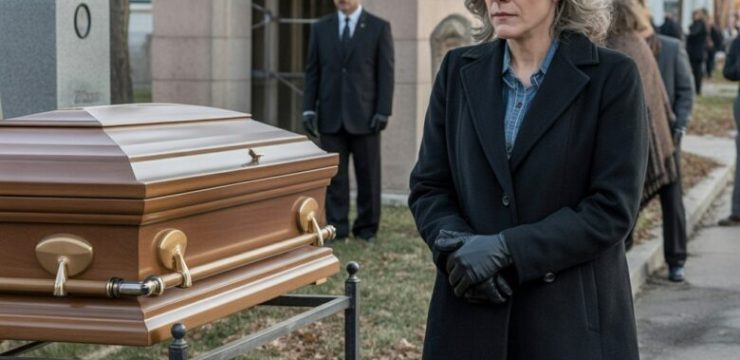We’ve all heard the saying “truth is stranger than fiction,” but nothing prepares you for those rare moments when real-life events completely outdo the wildest tales we could imagine. These stories are so bizarre, so unexpected, that they almost seem made up—except they’re entirely true. From mind-bending coincidences to unbelievable twists of fate, these tales will make you question just how unpredictable life can really be.
Before diving into these incredible stories, it’s worth asking—why does truth sometimes outdo fiction? The answer lies in the unpredictability of life. Fiction has to make sense, to follow a certain logic that readers or viewers can follow. Real life, on the other hand, follows no such rules. It’s chaotic, unpredictable, and often absurd, leading to stories that are more unbelievable than anything a writer could conjure.
Life throws curveballs that no one can see coming. This randomness is what makes reality so much stranger than fiction. Unlike a novel, where plot points are carefully crafted, real life can take turns that defy all logic.
There’s something inherently captivating about a true story that sounds like it should be a movie script. These tales fascinate us because they defy our expectations of what can actually happen. They make us question reality and remind us that the world is full of surprises.
One of the most astonishing true stories involves Tsutomu Yamaguchi, a man who survived not one, but two atomic bombings during World War II. Yamaguchi was in Hiroshima on a business trip when the first bomb dropped. Miraculously, he survived with minor injuries and returned home to Nagasaki—only to experience the second bombing a few days later. Despite the odds, Yamaguchi lived to tell the tale, proving that sometimes, truth is not only stranger than fiction but also more resilient.

Yamaguchi’s story is a powerful example of how coincidences in real life can seem more far-fetched than anything in a novel. The chances of surviving one atomic bomb are slim, but surviving two is almost incomprehensible. Yet, this was Yamaguchi’s reality.
Yamaguchi’s incredible survival story serves as a reminder of the resilience of the human spirit. It also highlights the bizarre twists of fate that can happen in real life, where even the most improbable events can come to pass.
In 1897, the small town of Greenbrier, West Virginia, was rocked by the murder of Zona Heaster Shue. What makes this case truly bizarre is how it was solved—through the testimony of Zona’s ghost. According to her mother, Zona appeared in a dream and revealed that her husband had murdered her. The information provided by the ghost led to an exhumation, which confirmed Zona’s claims and led to her husband’s conviction.
The Greenbrier Ghost case is one of the only instances where a ghost’s testimony was used in court. This surreal story blurs the lines between the supernatural and the legal, making it a truly unique example of how truth can outdo fiction.
The story of the Greenbrier Ghost has become a part of local folklore, but it also serves as a chilling reminder that sometimes, truth comes from the most unexpected sources. Whether you believe in ghosts or not, the case remains a fascinating chapter in legal history.
In a twist of historical irony, Edwin Booth, a famous actor and the brother of John Wilkes Booth (the man who assassinated Abraham Lincoln), once saved the life of Robert Lincoln, Abraham Lincoln’s son. This event occurred before the assassination, when Robert Lincoln was pushed off a train platform and narrowly avoided being crushed, thanks to Edwin Booth’s quick actions.
The connection between Edwin Booth and Robert Lincoln is one of those stories that’s so ironic, it feels like it must have been invented. The fact that the brother of a future assassin saved the life of the future president’s son is the kind of twist that would feel contrived in fiction, but it’s entirely true.
This strange encounter is a powerful example of how intertwined the threads of fate can be. It’s a reminder that real life often contains the kind of poetic justice and irony that we usually associate with carefully crafted stories.
When the Titanic sank in 1912, the world was shocked by the scale of the tragedy. But what many people don’t know is that the disaster was eerily predicted 14 years earlier by author Morgan Robertson in his novella Futility. The book described the sinking of a massive, “unsinkable” ship called the Titan, which met its fate after hitting an iceberg in the North Atlantic.
The similarities between the Titan and the Titanic are so striking that it’s hard to dismiss them as mere coincidence. The book described a ship nearly identical to the Titanic, down to the number of lifeboats and the circumstances of its sinking.
Robertson’s novella is an example of how fiction can sometimes eerily predict reality. It’s a reminder that the line between truth and fiction is often thinner than we think, and that real life can echo the stories we create.
These stories are just a few examples of how truth can be far stranger than fiction. They remind us that the world is full of bizarre coincidences, ironic twists, and unimaginable events that no writer could ever dream up. So the next time you hear a story that seems too unbelievable to be true, remember—reality often outdoes the wildest fiction.
In the end, these tales aren’t just stories; they’re a testament to the unpredictable nature of life. They show us that no matter how much we think we know, there’s always something out there waiting to surprise us. And that’s what makes the world such an endlessly fascinating place.






